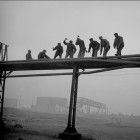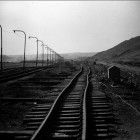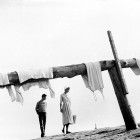About
Eustachy Kossakowski was born in 1925 into old Polish nobility. His grandfather Stanisław Kossakowski (1837-1905), was one of the founders of the Photographic Society in Warsaw and was the author of approximately sixty large albums of photographs showing life in the country manor in Lithuania at the end of the 19th and beginning of the 20th century. The collection is housed at the Curlionis Museum in Kaunas. His father, a respected surgeon Jan Kossakowski (1900-1979), took photographs in his spare time and had an improvised darkroom at home. Here Eustachy Kossakowski already began to develop his own photographs during the Second World War. Later, having abandoned his studies at the Faculty of Architecture of Technical University of Warsaw, he started a professional career in 1957, at first at a magazine Zwierciadło which he supplied with photographs of fashion and reportages. Unable to find a truly satisfactory role for himself in Poland, Kossakowski decided to emigrate to France. The professional and artistic experience gained in Poland allowed him to establish a new concept and regime of work. He moved away from ‘humanist’ photography and the ‘decisive moment’, as understood by Cartier-Bresson. The new ideas came to fruition in the first series of photographs taken by him in Paris. The city became his favourite source of inspiration, including the circular route round its peripherals and the large-scale renovation projects which had transormed its face. Living in France, he continued to maintain his links with the world of art. He often met a leading art critic, Pierre Restany and artists such as Daniel Buren and Niele Toroni. He enjoyed a close friendship with Raymond Hains. For many years he continued to work as a photographer for the Centre Georges Pompidou and then for the musée d’Art moderne de la ville de Paris. He was also an avid chronicler of independent exhibitions which took place in Paris in the 1970s and of the activities of alternative galleries. The Parisian period of his life coincided with several trips abroad. His longer stays in New York, Italy and Tunisia resulted in a series of photographs - in colour and with the role played by colour in photography. At the time, Kossakowski concentrated his efforts on experimenting with ‘light as a subject’. The coronation of those experiments was a particularly lavish book, Lumières de Chartres (The Lights of Chartres), enthusiastically received by the critics and the public. Until his death in 2001, Eustachy Kossakowski spent his life between France, Italy and, in particular, Poland.


























